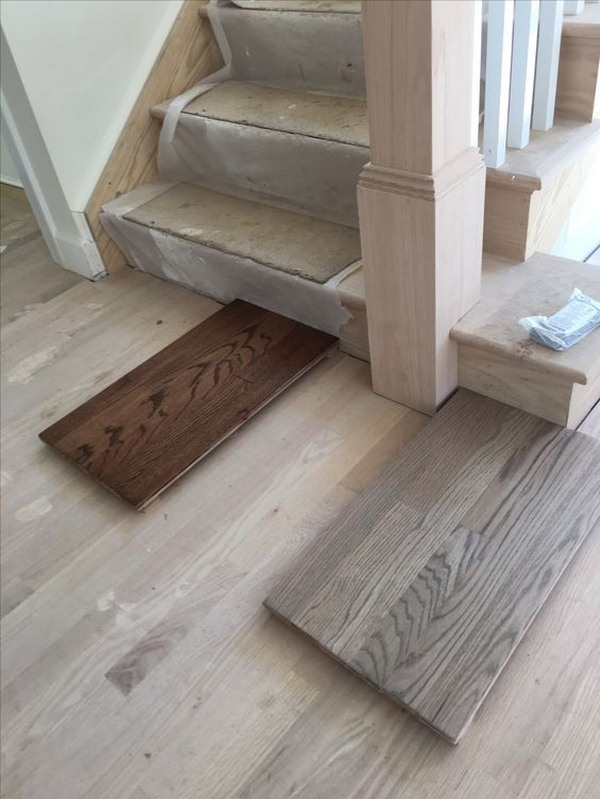Pickling Oak, Learn how to Pickle Oak — Pickling is a term given to staining oak in a pastel color – most often pickling is done in white as a “whitewash”. Pickling was very popular in the 1980’s and is still done today when a soft white wash finish is desired.
Minwax makes a pre-mixed white pickling stain called “Pickled Oak”. You could make your own stain by thinning down paint as some do, but i find no advantage to doing a “home-made” stain. All stains of any color for that matter can be “home-made” by using universal colorants into a clear stain base, but why jump through hoops when it is already pre-mixed and available?

To begin with Oak has open pores which when filled with colored filler adds a nice design element to the pickling. Most of the pickling I have encountered neglects this important element.To do your pickling and filling in one step you will need to add a product called “whiting” to your stain which will fill the pores of the wood when you apply the stain.
The way to stain with an opaque pastel stain as in white pickling is to scrub the stain on (if you have added whiting) to work it into the pores of the Oak, then wipe it off in the direction of the wood grain. You need to be constantly on the look out for stain gathering in contours and grooves Keep these areas cleanly stained without excess build up. The end result of your staining should be a piece of woodwork with a uniform white haze (some of the haze will be neutralized when you clear coat over it – when it is “wetted” with the clear coat).
A lot of pickling I have observed after a few years looks dingy and yellow as a result of using varnish or polyurethane over the top of the pickling. The problem with varnish and alkyd urethanes is that they yellow with age. I have always used shellac with the pickling I have done. Use fresh clear blond shellac. Old shellac does not dry properly and if it has been in a metal can for a while it may take on a rusty color from corrosion in the can. Thin the shellac with alcohol – about two parts denatured alcohol to five parts shellac to keep film build to a minimum.
Must Read:
You will lose some of the whiteness of your pickling when you clear coat. It just happens when the stain is wetted with the clear coat. If you want to “restore” or maintain that level of whiteness you can add a bit – not too much of white BIN shellac to you clear shellac to give it a white cast.
Tinting your clear shellac is not absolutely necessary, and is a bit harder to do – but it looks better if you do it. Test it out on a piece of scrap wood to be sure you have it right before proceeding with the project. It is important not to overdo the white tinting – less is better than too much.
The shellac will be hard to apply uniformly if you get too much white tint in it. Work quickly with the shellac and don’t re-brush over areas with the tinted shellac or you will get lapping. Just lay it on, lay it off and leave it.
Do two thin coats of lightly tinted white shellac then buff it smooth with fine sandpaper, then do one more final thin coat of un-tinted clear shellac.
View Comments
Have you ever done this on finished oak? I have an oak accent wall that I want to do but I want it to turn out! If you habe done it on finished oak do you have to sand it first?